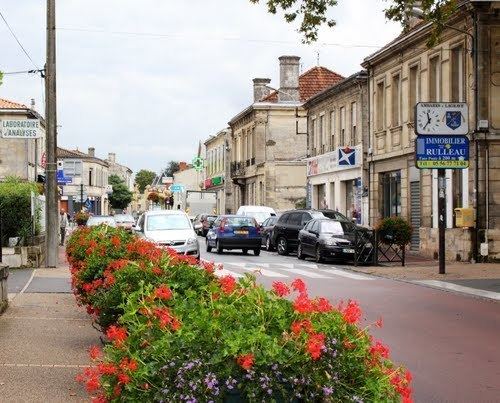Area 24.76 km² | Population (2009) 13,172 Local time Monday 7:46 PM | |
 | ||
Weather 12°C, Wind W at 24 km/h, 69% Humidity | ||
Reportage france 3 aquitaine municipales 2014 ambar s et lagrave
Ambarès-et-Lagrave (Ambarés e La Grava in Gascon dialect) is a French commune in the Gironde department in the Nouvelle-Aquitaine region of southwestern France.
Contents
- Reportage france 3 aquitaine municipales 2014 ambar s et lagrave
- Map of 33440 AmbarC3A8s et Lagrave France
- Lgv les travaux de jonction r alis s ce week end ambar s et lagrave
- Geography
- Transport
- History
- Administration
- Twinning
- Demography
- Economy
- Civil heritage
- Religious heritage
- Sports
- Notable people linked to the commune
- References
Map of 33440 Ambar%C3%A8s-et-Lagrave, France
The inhabitants of the commune are known as Ambarésiens or Ambarésiennes
Lgv les travaux de jonction r alis s ce week end ambar s et lagrave
Geography
Ambarès-et-Lagrave is part of the Bordeaux urban area located to the north of the Bordeaux conurbation between the Garonne and Dordogne. The A10 autoroute passes down the eastern side of the commune from north to south with Exit 42 → Ambarès-et-Lagrave, Saint-Loubès in the commune. The commune is mostly urbane with small areas of forest in the north and south and farmland in the west and north.
Ambarès-et-Lagrave is surrounded by several cities of the Urban Community of Bordeaux (CUB):
Transport
The commune is served by two railway stations: the Grave-d'Ambarès station and La Gorp station which have regular links with Bordeaux.
History
In the 12th century the city of Ambarès belonged to a vast feudal domain comprising a large part of the marshes of Entre-deux-Mers (Between two seas). Later this area became the Barony of Montferrand.
The ancient parish of Ambarès was almost entirely under the jurisdiction of the Lords of Gua who levied tithes from the 15th century.
The Lagrave district was attached to the commune of Ambarès in 1818.
Administration
List of Successive Mayors
(Not all data is known)
Twinning
Ambarès-et-Lagrave has twinning associations with:
Demography
In 2009 the commune had 13,172 inhabitants. The evolution of the number of inhabitants is known through the population censuses conducted in the commune since 1793. From the 21st century, a census of communes with fewer than 10,000 inhabitants is held every five years, unlike larger towns that have a sample survey every year.
Sources : Ldh/EHESS/Cassini until 1962, INSEE database from 1968 (population without double counting and municipal population from 2006)
The population of Ambarès-et-Lagrave has more than doubled between 1962 and 1999. This significant increase in the population is probably due to the its proximity to the city of Bordeaux.
Economy
Although the tertiary sector (services) is predominant in Ambarès-et-Lagrave, the town also has many jobs in industry (secondary sector).
Unemployment rate: 9.8% (2009, INSEE)
Civil heritage
The commune has many buildings and structures that are registered as historical monuments:
Religious heritage
The commune has several religious sites that are registered as historical monuments:
The Parish Church of Saint Pierre contains a large number of items that are registered as historical objects. For a complete list with links to descriptions (in French) click here.
Sports
The Ambarésienne Sports Association (ASA) was founded in 1970 and is a sports association affiliated with the French Federation of Omnisports Clubs (FFCO). Its purpose is to provide sport for all. The ASA had more than 2,500 members and 23 sections in 2012.
